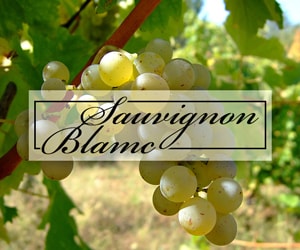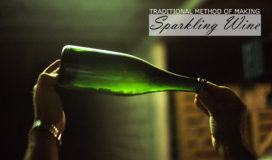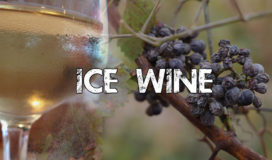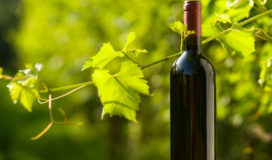Two sought-after whites of the wine world, Chardonnay and Sauvignon Blanc bring two different styles on the table. Both are dry yet distinctive wines. Let us take you through the differences between Chardonnay and Sauvignon Blanc.
Chardonnay:-
How do we say it?
Pronounced as shar-dun-nay, this grape varietal is immensely popular around the world. Its versatility is a major reason behind its popularity. It flows easily to fit in different styles — lean, sparkling Blanc de Blancs to rich, creamy white wines aged in oak.
Where did it come from?

This grape varietal got its name from a small village in France called Chardonnay located in the Burgundy region of France. The name literally translates to “place of thistles” or “thistle-covered place.”
It is also believed by some researchers that Chardonnay is a cross between Pinot Noir, Pinot Blanc and Gouais Blanc. Irrespective of the different theories of origin, Chardonnay has a fan base of its own.
You will be surprised to know that it is among the three grape varietals that are used to make Champagne and the only grape used in Blanc de Blancs Champagne. Isn’t that amazing?
Where to find it?
Chardonnay is well suited for Australian climate and has the ability to reflect a taste of place wherever it is grown. It can easily accommodate in the humid climate of the Hunter Valley and become a part of the Yarra Valley’s cool quotient, Adelaide Hills and Tasmania, and easily fit into warmer regions like Margaret River and the Barossa Valley.
How does it taste?
The primary flavours of Chardonnay include butter, apple, starfruit, pineapple and vanilla. The wine’s taste profile is dry and ranges from medium to full-bodied with medium acidity.
It has tropical fruit flavours like those of pineapple, papaya, and mango even though, it doesn’t taste sweet.
When aged in oaked barrels, Chardonnay wine has a creamier texture and buttery taste with hints of vanilla and spice. On the other hand, unoaked Chardonnay is more refreshing with flavours of apples and lemons.
How is it made?
Chardonnay is made in a dry style which implies that in the making after the grapes are pressed, the sugar left behind is converted into alcohol by yeast. When all of this sugar is converted, the wine comes up as dry. It lacks residual sugar.
How to enjoy it best?
Since it’s a dry wine, it can easily complement buttery and creamy dishes. You can easily pour yourself a glass of Chardonnay when eating halibut, cod, lobster, shrimp, crab, and scallops. You can also enjoy it with baked poultry made with butter and herbs. Caramelized sweet potatoes, risottos and cream-enhanced soups, sauces and pasta also make up for a good food pairing with this white wine.
Sauvignon Blanc:-
How do we say it?
Pronounced as saw-vin-yawn blonk, this grape varietal produces different styles ranging from lean to bountiful. Appreciated by wine lovers for its green herbal flavours and racy acidity, it is not behind in popularity.
Where did it come from?
The birth place for Sauvignon blanc is the Loire Valley in France. The name of the grape varietal is derived two French words — sauvage meaning wild and vigne meaning vine. The grape comes from a wild growing plant which has leaves similar to those of wild grapevines.
Where to find it?
Australia’s Sauvignon Blanc can easily be found in Adelaide Hills and Margaret River. These cool areas enjoy a lot of sun and temperature control from the ocean breeze.
How does it taste?

The primary flavours of Sauvignon Blanc include gooseberry, honeydew, grapefruit and passion fruit. The taste profile is dry moving from a medium to light body. It has lots of herbal notes that punch upfront.
The nose expiates aromas that range from freshly cut grass, and asparagus, to tropical and ripe passion fruit, or even mango. The wine has racy acidity and moderate alcohol.
How is it made?
Sauvignon Blanc is traditionally made as a dry and still wine. However, some winemakers make it with a touch of sugar for richness sake. The wine is also used in making the famous Bordeaux dessert wine where it is blended with Semillon for flavour enhancement.
How to enjoy it best?
This wine will give you abundance of food options to choose from. It is a great choice with sauces made with herbs poured over chicken, tofu, or fish dishes. An absolute delight if you want to enjoy it best with Thai or Vietnamese cuisine. It’s a big yes to cheese pairings like goat cheese, burrata, mozzarella di bufala, goat gouda, feta, parmesan, and ricotta salata. You can also try green peas, tomato, lime, zucchini, bell pepper, and eggplant to savour this white wine.
While Chardonnay is a hearty white wine on the heavier side, Sauvignon Blanc is on the lighter side of the spectrum. You can consume Sauvignon young, but it would be better to age Chardonnay for a few years, all the more if its fermented in oak barrels.















Excellent web site. A lot of helpful info here. I’m sending it to a few buddies ans additionally sharing in delicious.
And obviously, thank you on your sweat!